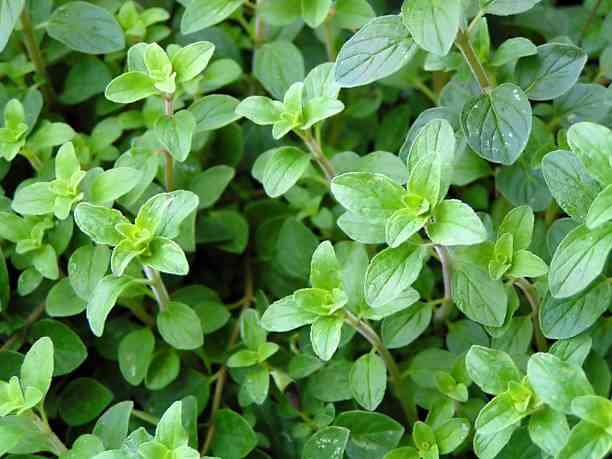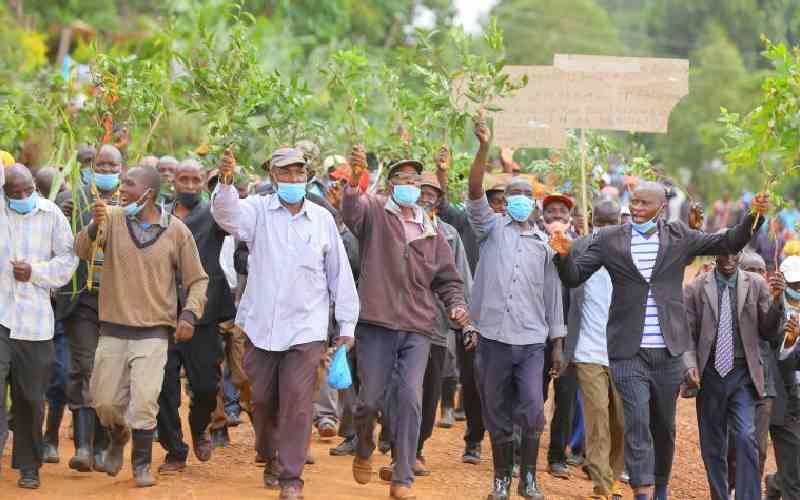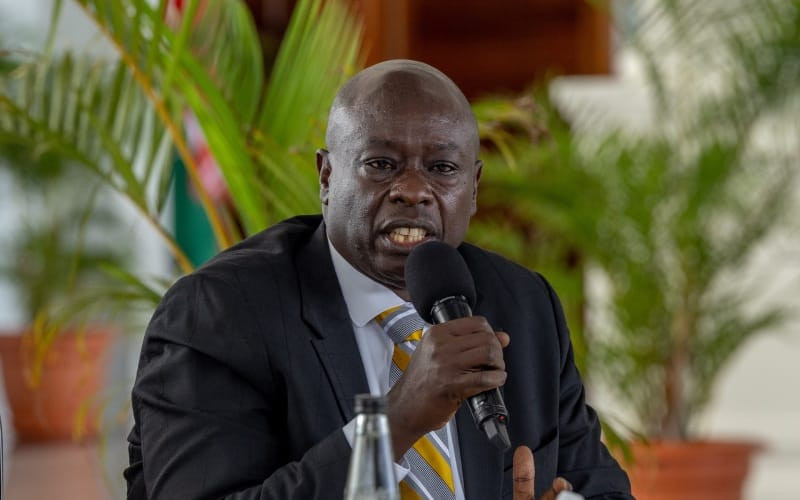By MANGOA MOSOTA
The farm is teeming with lush bananas, at different stages of maturity. You would never guess the five-acre banana plantation started with just two suckers six years ago.
The plantation owner, John Ondago, has patiently and resolutely worked to expand his farm.
He recalls being presented two banana suckers by a friend in Busia, Uganda, who wanted him to try his hand at growing the fruit.
"I planted the two suckers and watered them to maturity. The locals thought I was a crazy," says Ondago, at his farm in Lunjre village, Siaya County. "Many of them are yet to acknowledge that they can improve their lot through farming."
Ondago says that after he realised the returns from bananas were better than maize, he started concentrating more on bananas.
Commercial farming
"I used to harvest about 25 sacks of maize from five acres, but the returns from the bananas 200 more than maize," explains the retired teacher aged 68.
There are four types of bananas on his farm– Fiah 23, Ngombe, Fiah 17 and Banana Green.
The farm produces about 50 mature bunches monthly and he expects this to triple as more plants reach fully maturity.
Ondago is a member of St Teresa Tego Yie group. The group’s emphasis is commercial farming of bananas in Ugunja District in Siaya County. Members of the group have increased their acreage of bananas.
The group recently visited a number of farmers in Masaka and Mbarara in Uganda on a four-day tour in which they acquired more skills on banana farming.
"They (Ugandan banana farmers) use mulching to reduce evaporation, and as result increases the amount of water the plants access," says Ondago. He adds that Ugandans take the farming seriously and some have more than 30 acres under bananas.
Ready market
He says many Ugandan families own less than an acre of land, but fully use it growing bananas. "This has transformed their socio-economic lives."
Stay informed. Subscribe to our newsletter
To imbue more farmers to plant the crop, they recently formed Ugunja Banana Farmers Programme, which has 200 members.
"We even have schools as members as more people see the value of the crop," Ondago says.
He says there is a ready market at Ugunja shopping centre, and buyers usually come to his farm for the produce. "Most of customers are widows, and they buy the bananas weekly," he says.
Farmyard manure
The father of 13 says his major farming expenditure is manure. He, however, easily makes it from farmyard manure.
He has not employed farm workers, but instead his wife, Trizah Awuor. Their two sons assist in the farm.
The major challenge is erratic rainfall in the area, which leads to delay in maturity of the crop, and
also affects their sizes
also affects their size.
"But I have realised mulching redusces this drastic effect," he says.
82,000 hectares
Banana farming is concentrated in areas such as Kisii Highlands, Meru, Embu, and several parts of Central Province.
There has been an increase in the area under banana production.
For instance, the land put under the crop rose to 82,000 hectares in 2006, from a low of 43,000 hectares in 1996. This is according to statistics from the Ministry of Agriculture.
 The Standard Group Plc is a
multi-media organization with investments in media platforms spanning newspaper
print operations, television, radio broadcasting, digital and online services. The
Standard Group is recognized as a leading multi-media house in Kenya with a key
influence in matters of national and international interest.
The Standard Group Plc is a
multi-media organization with investments in media platforms spanning newspaper
print operations, television, radio broadcasting, digital and online services. The
Standard Group is recognized as a leading multi-media house in Kenya with a key
influence in matters of national and international interest.
 The Standard Group Plc is a
multi-media organization with investments in media platforms spanning newspaper
print operations, television, radio broadcasting, digital and online services. The
Standard Group is recognized as a leading multi-media house in Kenya with a key
influence in matters of national and international interest.
The Standard Group Plc is a
multi-media organization with investments in media platforms spanning newspaper
print operations, television, radio broadcasting, digital and online services. The
Standard Group is recognized as a leading multi-media house in Kenya with a key
influence in matters of national and international interest.









